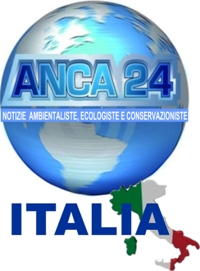 What in the beginning was a manifestation of the so-called hippie movement in the early 70′s, protesting against oil spills, polluting factories, power plants, sewage, toxic waste, pesticides, freeways, and loss and extinction of wildlife suddenly realized they had common values with the rest of society.
What in the beginning was a manifestation of the so-called hippie movement in the early 70′s, protesting against oil spills, polluting factories, power plants, sewage, toxic waste, pesticides, freeways, and loss and extinction of wildlife suddenly realized they had common values with the rest of society.
The youthful fervor inherited from the convulsive ’60s unleashed a maelstrom call which involved two thousand universities, thousands of elementary, middle schools and hundreds of communities. The social pressure had its achievements and the United States government created the Environmental Protection Agency (EPA), known as EPA and a number of laws aimed at protecting the environment.
In the context of the spirituality search, plagued by fears of the “Cold War”, the decadence of “Vietnam”, which resonated in the lyrics of Lennon’s hopes raised in “Imagine ” for world peace. Parallel to this slow environmental awareness, there was a growing opposition to U.S. involvement in the war.
Public demonstrations against the war, particularly those in universities, promoted the idea that individual actions would make a difference, and that organized challenges to the “status quo” could actually change politics and public behavior.
Surprisingly insurgent emerges the figure of a “dreamer” as “leading voice” of a movement that transcends today. Gaylord Nelson, then a Democratic senator from Wisconsin and longtime conservationist, was one of the people who understood that the methods developed for the protest against the war might well be effective in other areas.
“At that time, ” Nelson wrote, “there was a great discontent in the universities because of the war in Vietnam. There were protests called anti-war classes throughout schools across the nation. On a flight from Santa Barbara the University of California at Berkeley, I read an article on such classes, and suddenly I thought: Why not to make a nationwide class on the environment? here is the origin of Earth Day ”
Clung to this idea, Nelson returned to Washington in August 1969 and began promoting Earth Day among governors, mayors of major cities, editors of college newspapers and, more importantly, in the Academic Journal, which circulates in elementary and high schools across the country.
In September, Nelson formally announced that there would be a nationwide class on the environment in the spring of 1970. Later recounted what happened next:
“The wire services broadcast the article around the country. The response was overwhelming. Served as officials that suppress the organized crime. Telegrams, letters and phone calls poured in from around the country. With the help of the Senate staff, I took activities related to Earth Day outside of my office. ”
By December of that year, the movement had expanded so fast that it became necessary to open an office in Washington to serve as a national center for distributing information and attend questions and activities relating to Earth Day.
Earth Day achieved what craved. The aim was to demonstrate a big concern for the environment at the national level, which shook the political arena. It was a risky move, but it worked. Twenty million people participated in peaceful demonstrations across the country. Ten thousand schoolchildren and high school students, two thousand colleges and a thousand communities were involved.
It really was an amazing popular blast . People was worried and Earth Day became the first opportunity they had ever had to join a national demonstration to send a strong message to politicians: the message to awaken and do something.
Operated by the spontaneous and enthusiastic response at the grassroots level. Nothing like this had happened before the event in the middle of the “brotherhood” that characterized this movement, “Brother environment” becomes the fundamental basis of this “ideology.”
In 1972, it held the first International Conference on Environment: Stockholm Conference, whose aim was to raise awareness among world leaders about the magnitude of environmental problems and to institute the necessary policies to eradicate them. The United Nations celebrates Earth Day each year on the vernal equinox (around March 21).
On February 26, 1971, the UN Secretary-General signed a proclamation to that effect. At the time of the equinox sounds the Peace Bell at the headquarters in New York, “Earth Day” is a party that belongs to the people and is not regulated by a single entity or body, nor is related to political demands nationals religious, ideological or racial.
Then, Earth Day will serve for reflection on the awareness of natural resources and their management, environmental education, and participation as environmentally conscious citizens. This day is truly to “give a hand” to our “brother environment” for our “Mother Earth” feels our solidarity.
By Gustavo Carrasquel / Blue Channel 24






